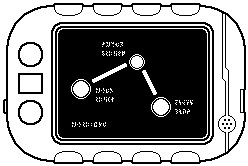Difference between revisions of "Neurotechnology"
| (3 intermediate revisions by the same user not shown) | |||
| Line 11: | Line 11: | ||
Human neurocouplers are believed to exist, but are not yet commercially available. | Human neurocouplers are believed to exist, but are not yet commercially available. | ||
| + | |||
| + | == See also == | ||
| + | {{:Referral-Tree-C-Cognitive-Technology}} | ||
| + | {{Referral-Tree-L-Lifeforms}} | ||
| + | {{Referral-Tree-Technologies}} | ||
== References & Contributors ([[Sources]]) == | == References & Contributors ([[Sources]]) == | ||
Latest revision as of 15:32, 8 November 2020
Neurotechnology is the science of interfacing electronic/cybernetic systems to a sophont's central nervous system(s).
Description (Specifications)[edit]
No information yet available.
History & Background (Dossier)[edit]
At lower tech levels, neurotech uses 'hardwired' techniques, which involve surgical implantation of interface sockets on the sophont, and Organo-Metallic links spliced directly into nerve tissue, with all its associated hazards.
The latest S'mrii neurotech uses advanced 'non-invasive' techniques, based on the Becklin-Sikia'mr Effect, an obscure quantum mechanical effect which allows neural signals to be induced very precisely from a distance of several centimetres. The neural inductor apparatus (or neurocoupler) may be worn outside the body (usually in the form of a 'helmet' or 'crown') and the need for surgery is eliminated.
Human neurocouplers are believed to exist, but are not yet commercially available.
See also[edit]
Cybertechnology[edit]
Lifeform Sciences[edit]
- L: Lifeform Sciences
Technologies[edit]
References & Contributors (Sources)[edit]
| This article is missing content for one or more detailed sections. Additional details are required to complete the article. You can help the Traveller Wiki by expanding it. |
- Traveller Wiki Editorial Team
- Author & Contributor: Lord (Marquis) and Master of Sophontology Maksim-Smelchak of the Ministry of Science
